Shanling UA4 DAC AMP – Smart Dongle United
Shanling UA4 is a $99 USD DAC/AMP with a new ESS ES9069Q DAC, Strong Output Power, DSD512 and Hi-Res PCM support, up to 32 Bit and 768kHz, and with both a Balanced Headphone Output and a single ended one. Today we will be reviewing it, the sound it provides, and compare it to other entry-level dongle DAC AMPs, including FiiO BTR15 (119 USD), iBasso DC04PRO (119 USD), HIDIZS XO (99 USD), and ddHIFI TC44C (119 USD).
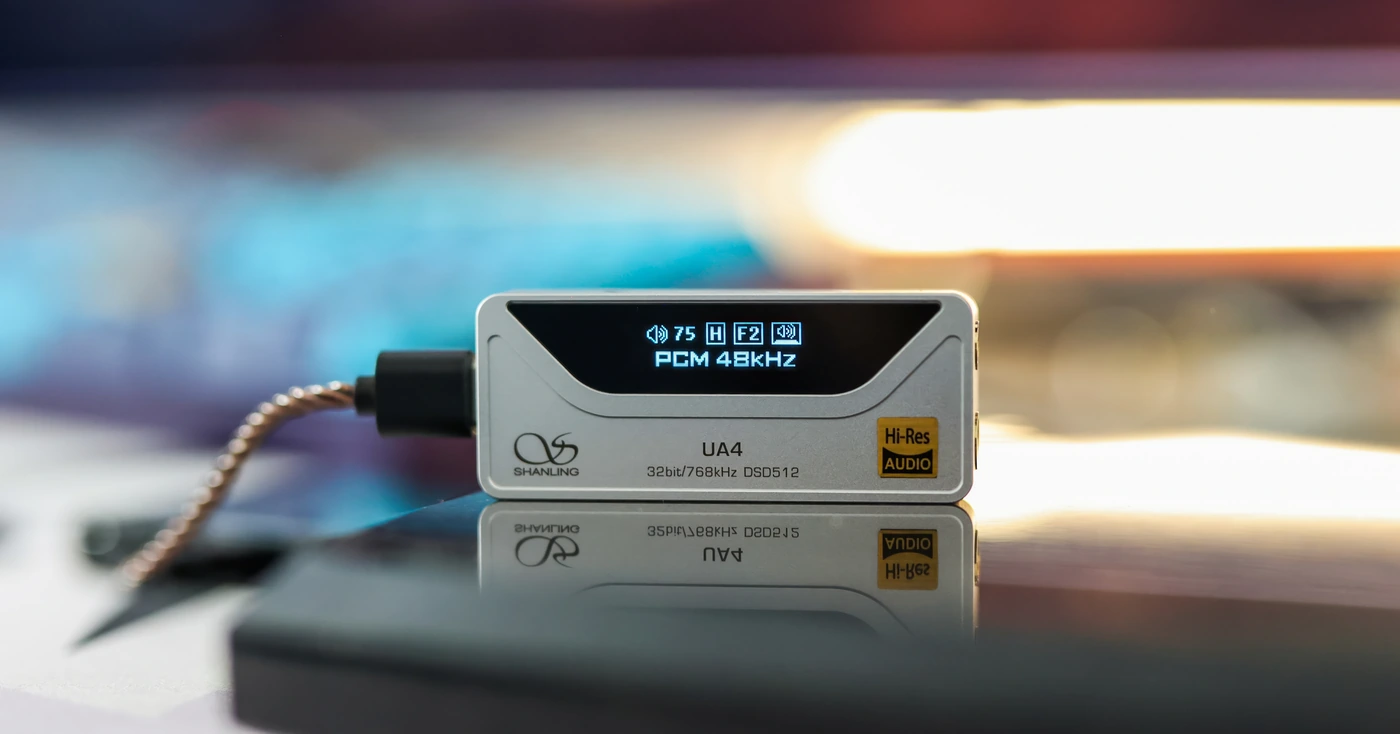
Introduction
Shanling has always been a road opener, so it is no surprise that they are some of the first companies to implement new DAC chips in their products, and the new ESS ES9069Q is a first time here, with no other products featuring it yet. There is only so little you can do to revolutionize a DAC AMP Dongle right now, but Shanling always tries to bring in something new, to tweak something, to enhance the experience of each user. The new UA4 has a little display, and although it is not something unheard of before, it brings a lot of characteristics to an entry-level price, making an interesting product for someone who’s just starting, or someone who wants an inexpensive alternative to their current setup. As an Amazon Influencer, I earn from qualifying purchases, and using the purchase links in my reviews helps me maintain this website and YouTube channel.
I’d like to thank Shanling for providing the sample for this review, in exchange for my honest opinion. This review is a description of my personal experience.
Product Link
You can grab one from www.amazon.com here – https://amzn.to/3OCvTOu
If you’re in the UK, you can grab one from www.amazon.co.uk here – https://amzn.to/4btmMt9
And if you’re from Europe, you can grab one from www.amazon.de here – https://amzn.to/3OxMbI3
Build Quality/Aesthetics
Shanling UA4 is an edgier design compared to older Shanling UA series of dongles, like UA2 Plus or Ua1 Plus. We have three navigation buttons, which can be used for either navigation or volume control, and a Type-C USB Input. UA4 works in both UAC 1.0 and UAC 2.0 modes, which means that it has the potential to be compatible with consoles, and older devices, but also works with Android smartphones and Windows PC Computers.
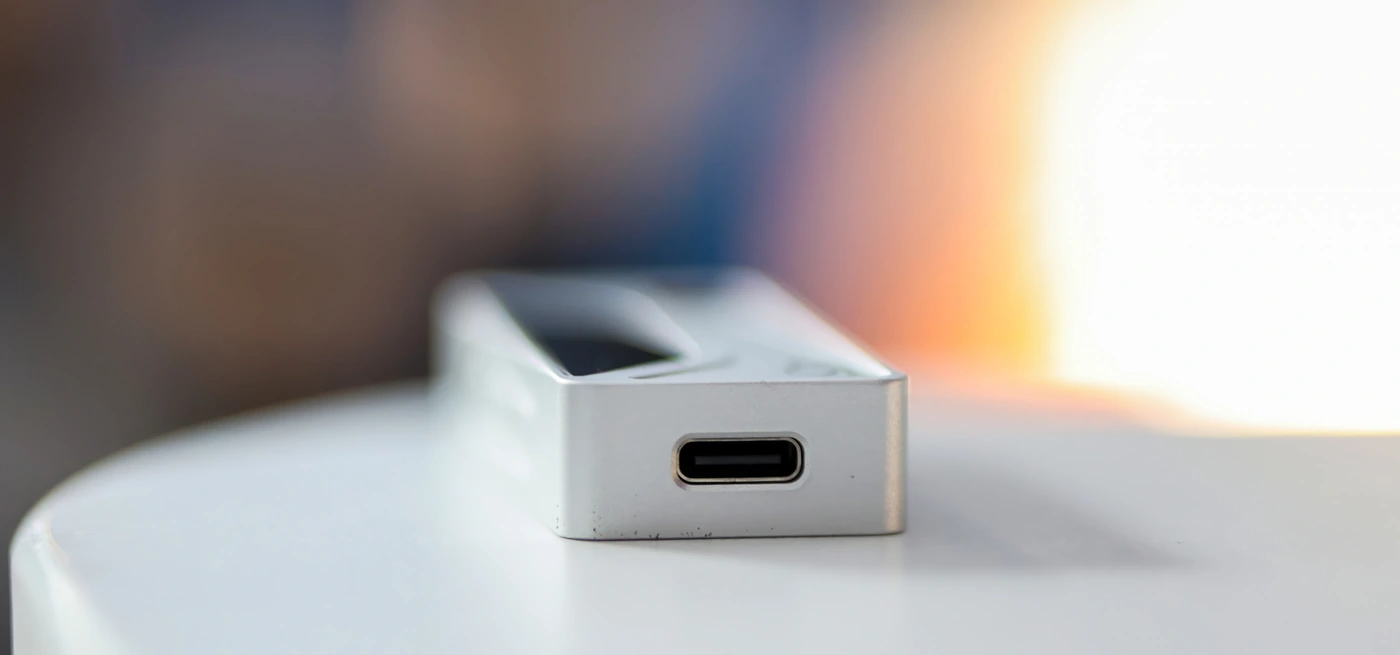
It is written in big letters on the back of UA4 that it is MQA enabled, and with Tidal still having a big part of its library available in MQA as the highest resolution format, and it has up to 16X MQA Playback. You have to enable it from Tidal to work in Windows, as otherwise Tidal does the MQA decoding / playback parts.
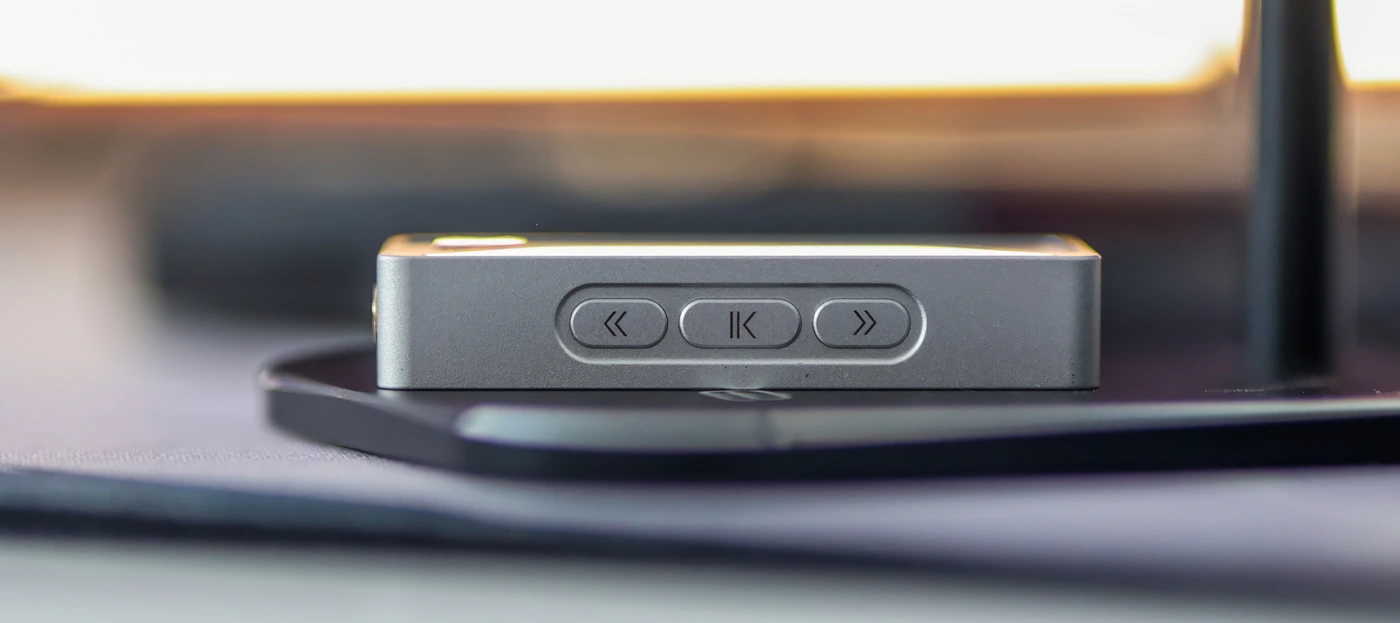
I’ve seen a few comments about things that work and do not work on UA4, so I think it is best to address those right away. On Windows and Android, the buttons will change the volume for me, and they work as intended. It takes 2 clicks to wake up the UA4, after which the buttons work as intended. There is that delay, so the first button click wakes up the UA4, the second one starts changing the volume. There have been reports that the first part of a song is cut, but I cannot confirm whether this happens. What I can confirm is that it happens far less than I’ve seen with other dongles, UA4 seems to have a higher buffer for which it waits to load before it starts playing.
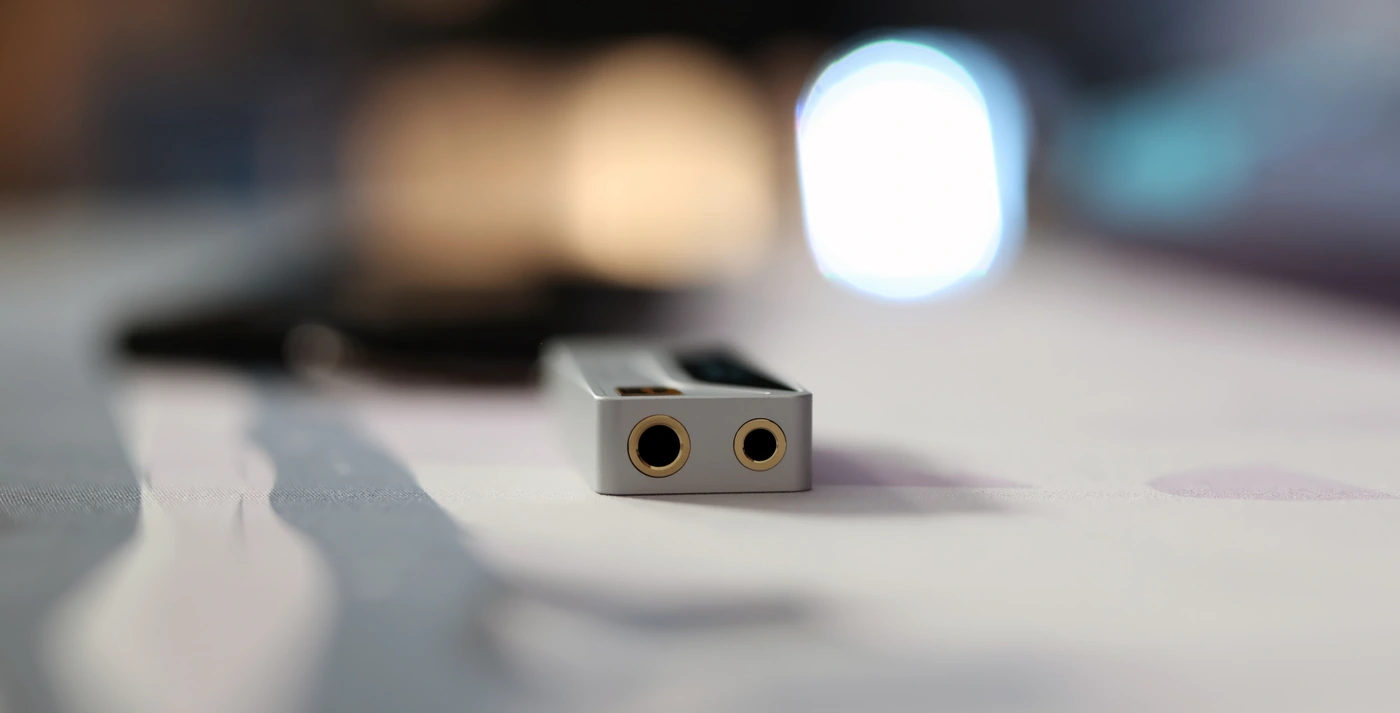
Using a Sync Test, I can confirm that there is no USB DAC delay with either Windows or Android. I want to make a point that not all android phones play nicely with USB DACs, and OnePlus is one of the companies that has issues with all dongle DACs, while Samsung, Huawei and Xiaomi are known to be free of issues.
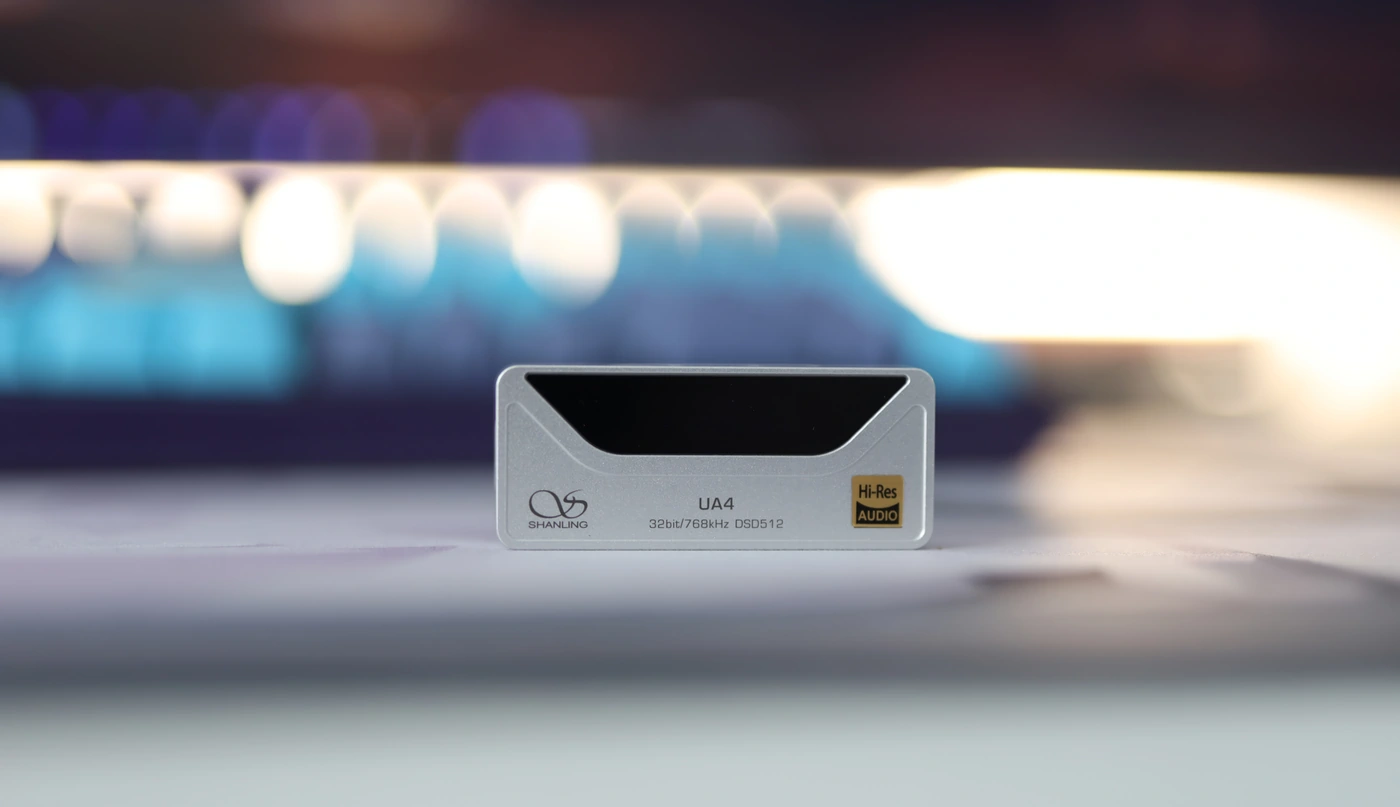
The power output is very different between the 4.4mm Balanced Output and the 3.5mm Single Ended output, with the SE output having 137mW per channel at 32 OHMs, a channel separation of -71 dB, and an output impedance of 0.4 OHMs. The Balanced output has 227mW per channel for an impedance of 32 OHMs, a Channel Separation of -106dB, and an output impedance of 0.8 OHMs. I cannot hear any hissing with sensitive IEMs with UA4, on either headphone output, and I’ve tested it with Campfire Audio Ara, Sennheiser Ie900, Ambient Acoustics MAD24, and Dita Perpetua.
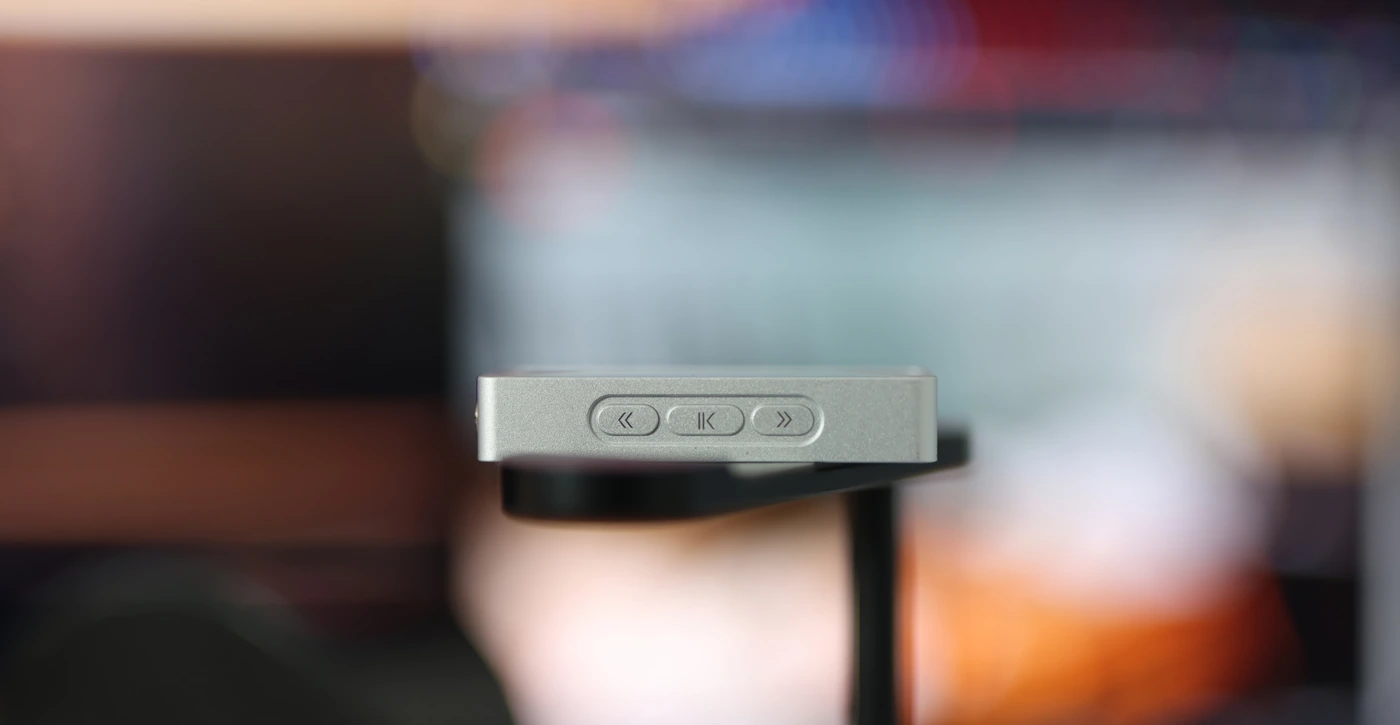
The maximum driving power is ok, not the highest out there, but enough for basically most headphones and IEMs. With the newest implementations of DAC/AMPs, I tend to find that using low gain if it satisfies the volume needs will be better, the sound has better control, is more rounded and cleaner, so use Low Gain if the volume is enough. I found that for IEMs, I don’t get to 100% with any IEM. Use UA4’s internal volume to get the best sound, and keep the PC or Phone at max for the best resolution / clarity. Shanling quotes UA4 as consuming less power than most of the competition, and I can confirm, it runs cool, consumes very little from Samsung S23 Ultra, and it is a safe to use DAC for long listening sessions.
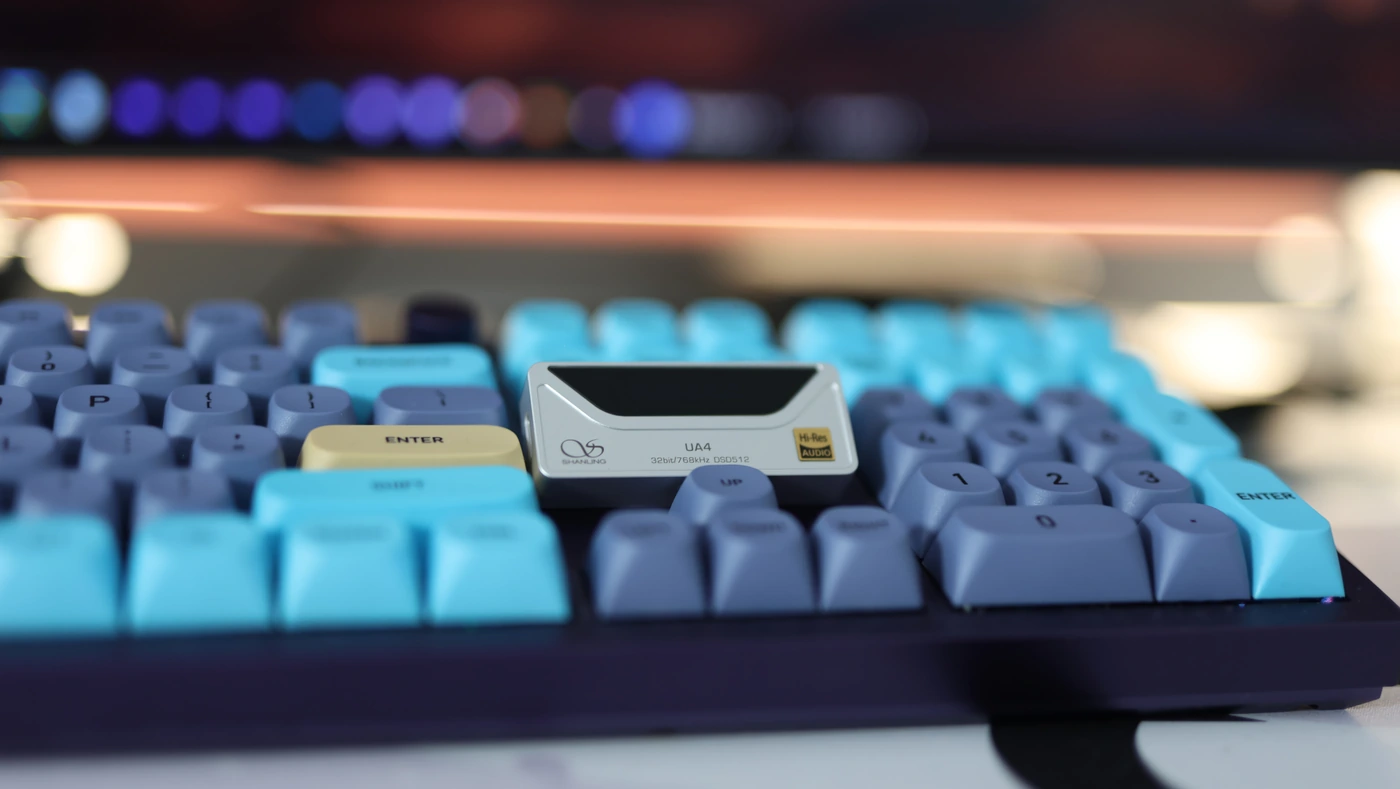
There are Dual Ricore Power Amplifiers, and Tantalum Capacitors, with Six Kemet capacitors to get the sound of UA4. The numbers indicate that the soundstage might sound wider on the Single Ended output, as there is more channel crosstalk and the two channels feed into each other. The response of UA4 is generally a bit laggy, but not exaggerated, it takes about half a second to react to the key you pressed for the first time, then you can quickly press keys and it registers each properly. You can keep the volume buttons pressed and it will quickly increase or decrease the volume.
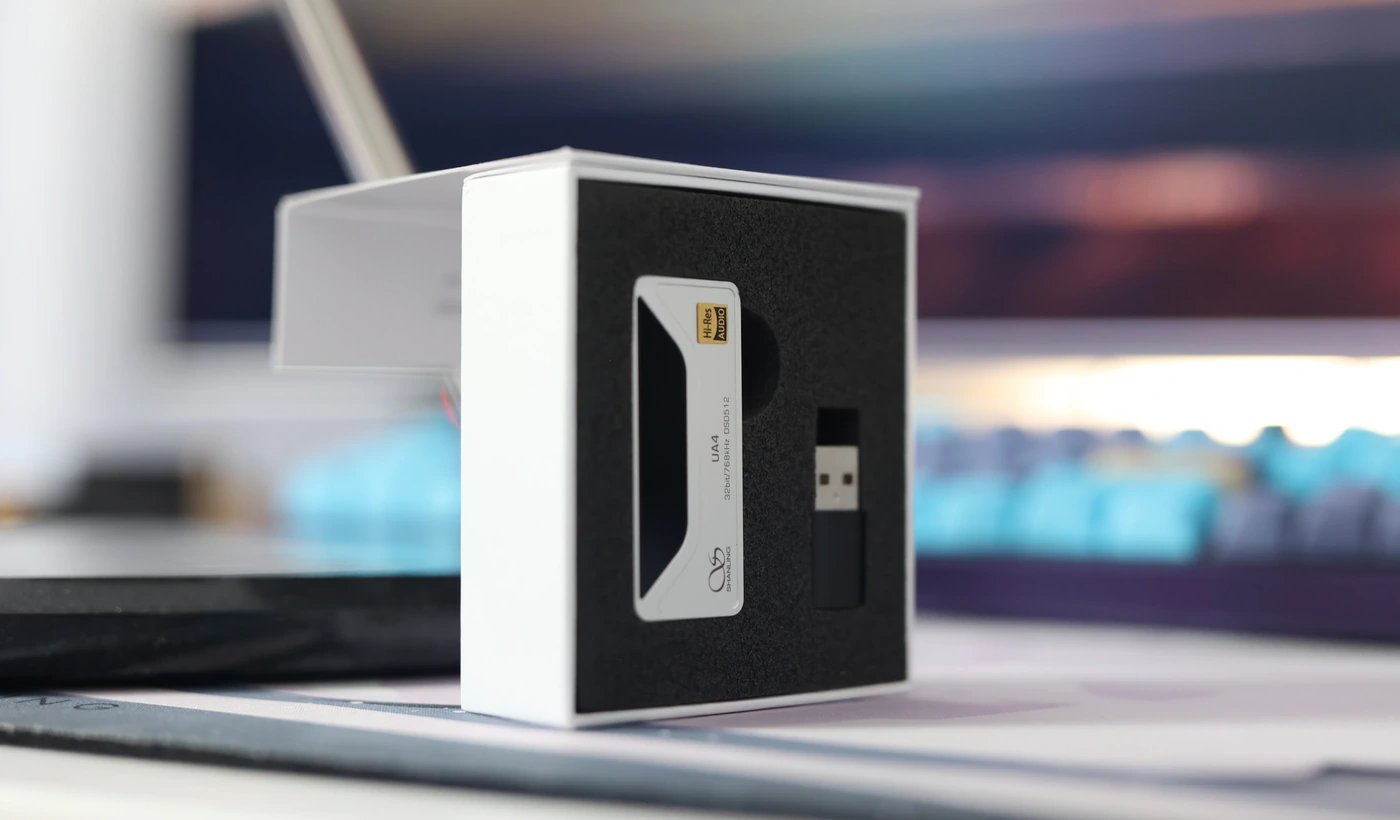
To test the new Shanling UA4 I’ve been using a selection of IEMs and Headphones, including Sennheiser IE900, HIFIMAN HE1000SE, Soundz Avant, Crosszone CZ-10, Dekoni x HIFIMAN Cobalt, YanYin Canon II, OLLO S5X, Erzetich Thalia, and IMR Dark Matter. Ua4 can drive all of the large headphones decently well, although it isn’t powerful enough for HE1000SE. Crosszone CZ-10 sounds sweet and enthusiastic out of UA4, and with IEMs, there is no background hissing and no noise, but good control, a clean sound, excellent clarity and resolution.
Sound Quality
The general signature of Shanling UA4 can be described as clean, slightly warm, with a full, deep and voluptuous bass, a natural sounding treble, with good extension and air, and with a natural edging towards wide soundstage. The sound is generally dominated by a sligtly stronger lower midrange than the upper midrange, but it has a good presentation for both male and female voices, UA4 is generally dynamic and has enough headroom to make music exciting.
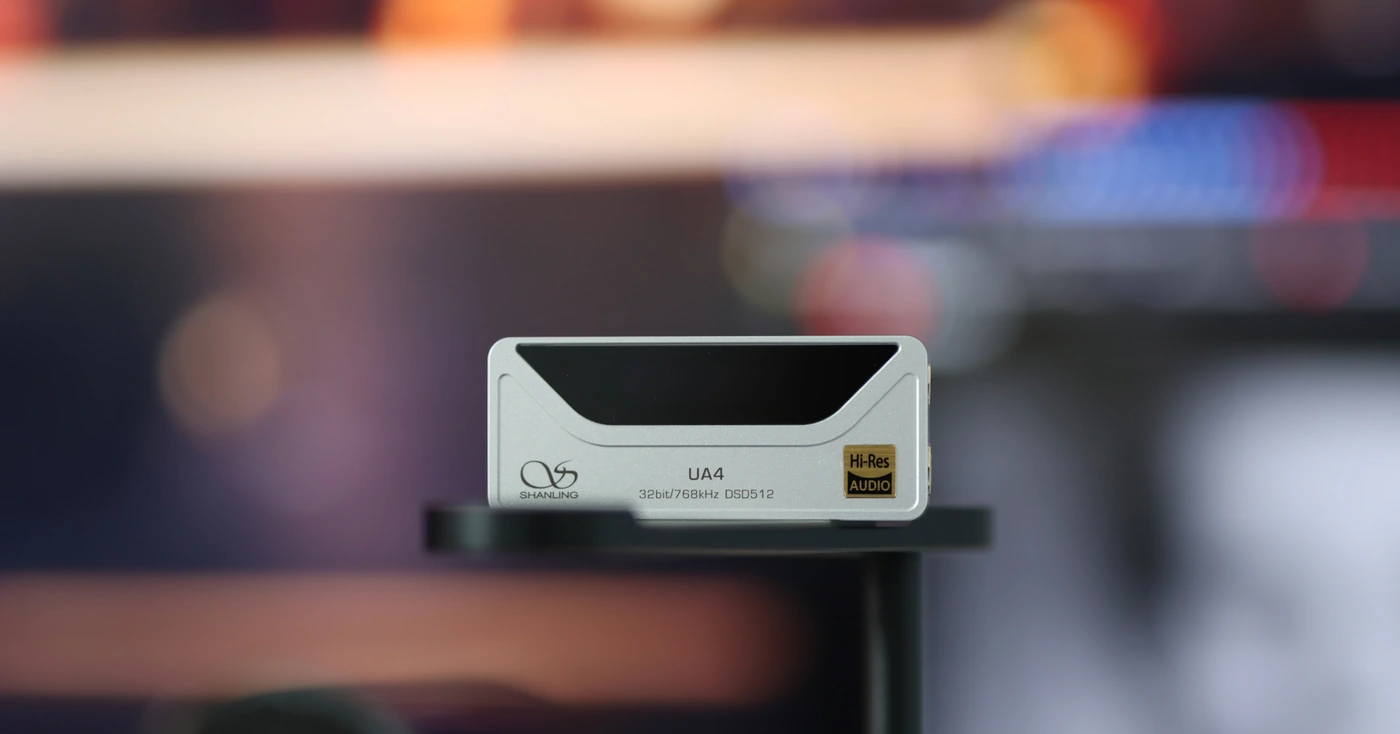
Starting with the Bass, it has always been a Shanling house sound characteristic to have a strong, powerful and rounded bass, and UA4 is no exception, and it comes to surprise us with a strong, voluptuous and natural bass. The bass transients are natural, edging towards slow, as UA4 is ever so slightly sloppy, but large, creating an impressive, punchy and grand sounding low end. The bass has a bit of emphasis for the entire bass, from the sub, to midbass all the way to the upper bass. This emphasis only ends in the lower midrange, so you can expect the bass to sound focused, present and Ua4 can warm up brighter, edgier and harsh sounding IEMs and headphones just fine.
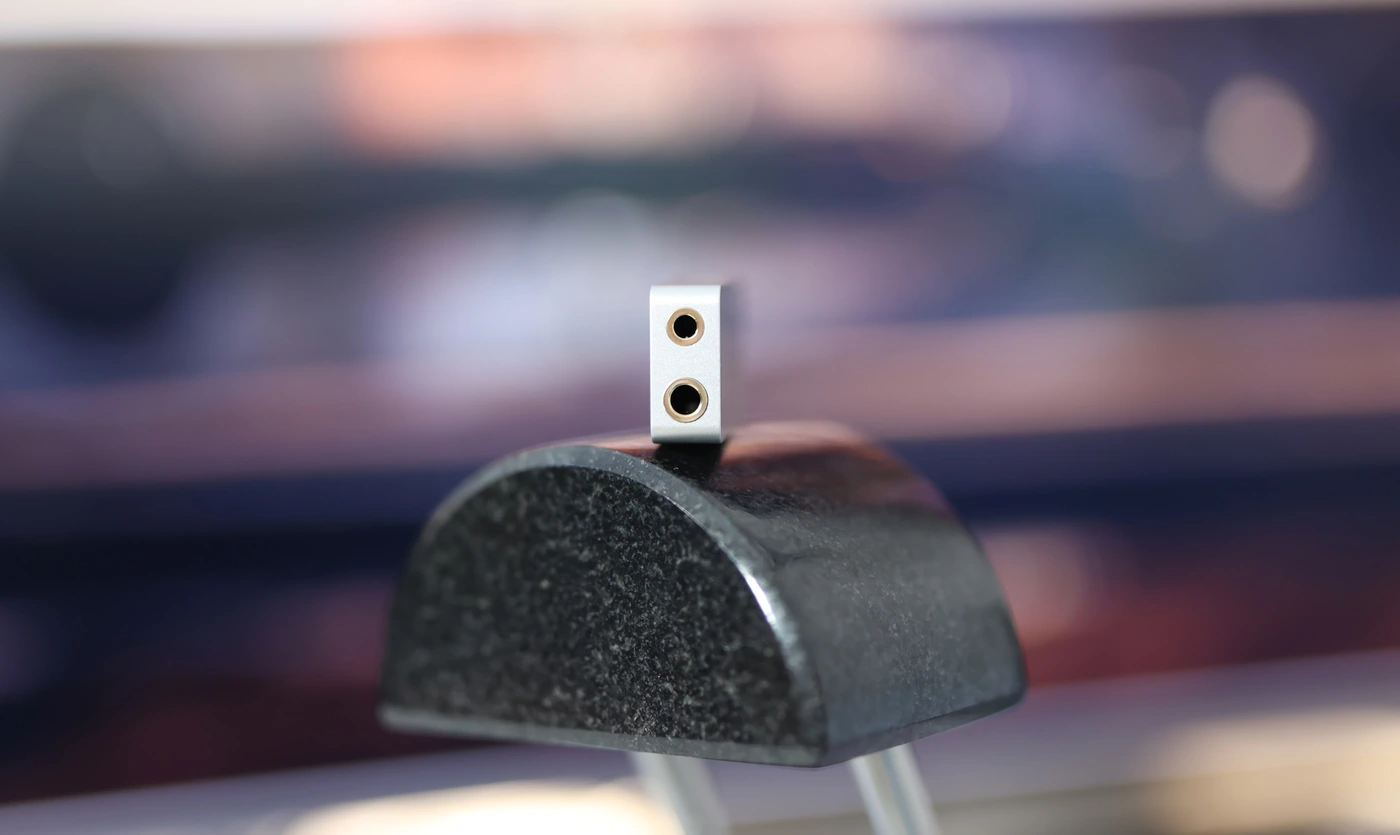
The midrange is clean, detailed, and has good resolution. The mids are warm in tonality, and they tend to emphasize male voices a bit over female voices, so bands like Enter Shikari have a bit more power in the voices compared to Sirenia or Mori Calliope. Shanling designed a wide / natural soundstage, and UA4 never sounds congested, but the stage expands about as much as the IEMs and Headphones normally would, in both width and depth. The instrument separation is natural, UA4 is not super analytical, but doesn’t smear instruments either, offering what I’d consider a very natural presentation through and through.
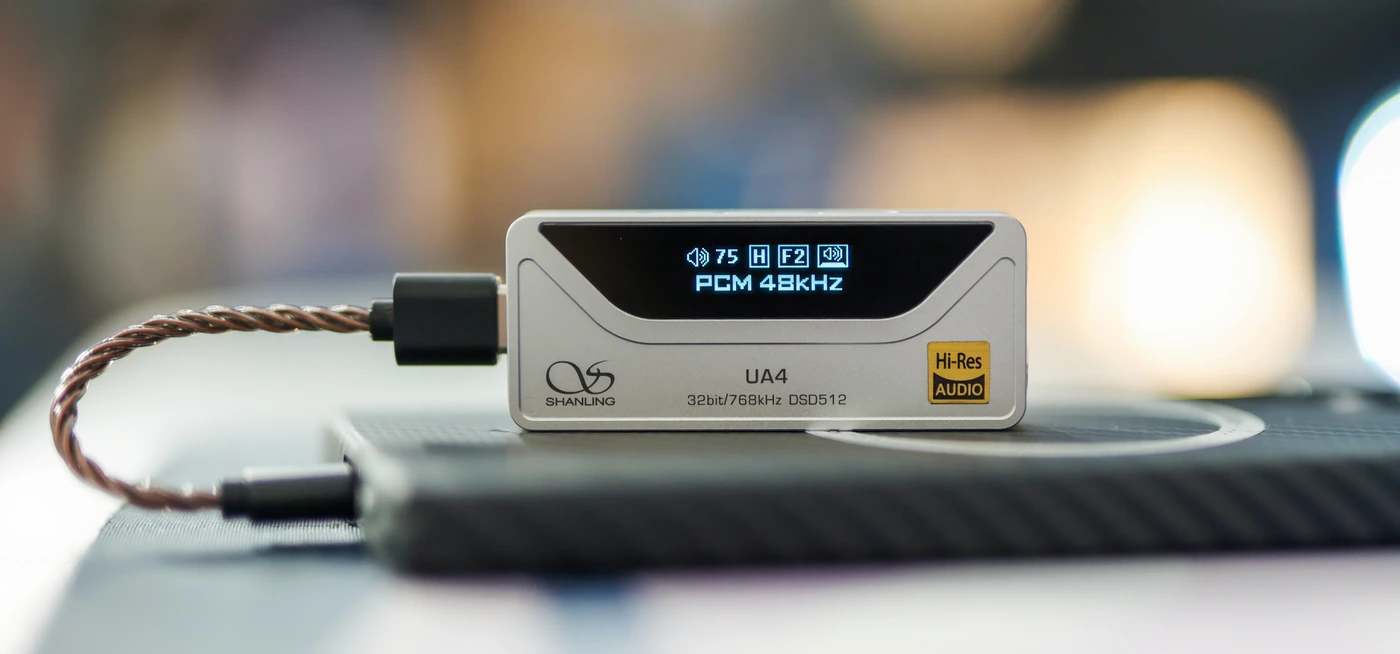
We have a smoother, leaner and relaxed treble with UA4, and it sounds relaxed, smooth, clean and fatigue-free. The treble extension rolls off gently starting with about 9kHz, after which it very gently loses a bit of power in favor of smoothness and relaxation. The treble transient response is quick, and the treble can have a bit of grain at times, which helps create a feeling of resolution, clarity and detail. UA4 is able to extract micro details rather well, but it won’t push those onto you. All in all, it works well as a generalist Dongle DAC, having a pleasing presentation for both Rock, Metal, EDM, Dubstep, Pop and even Jazz.
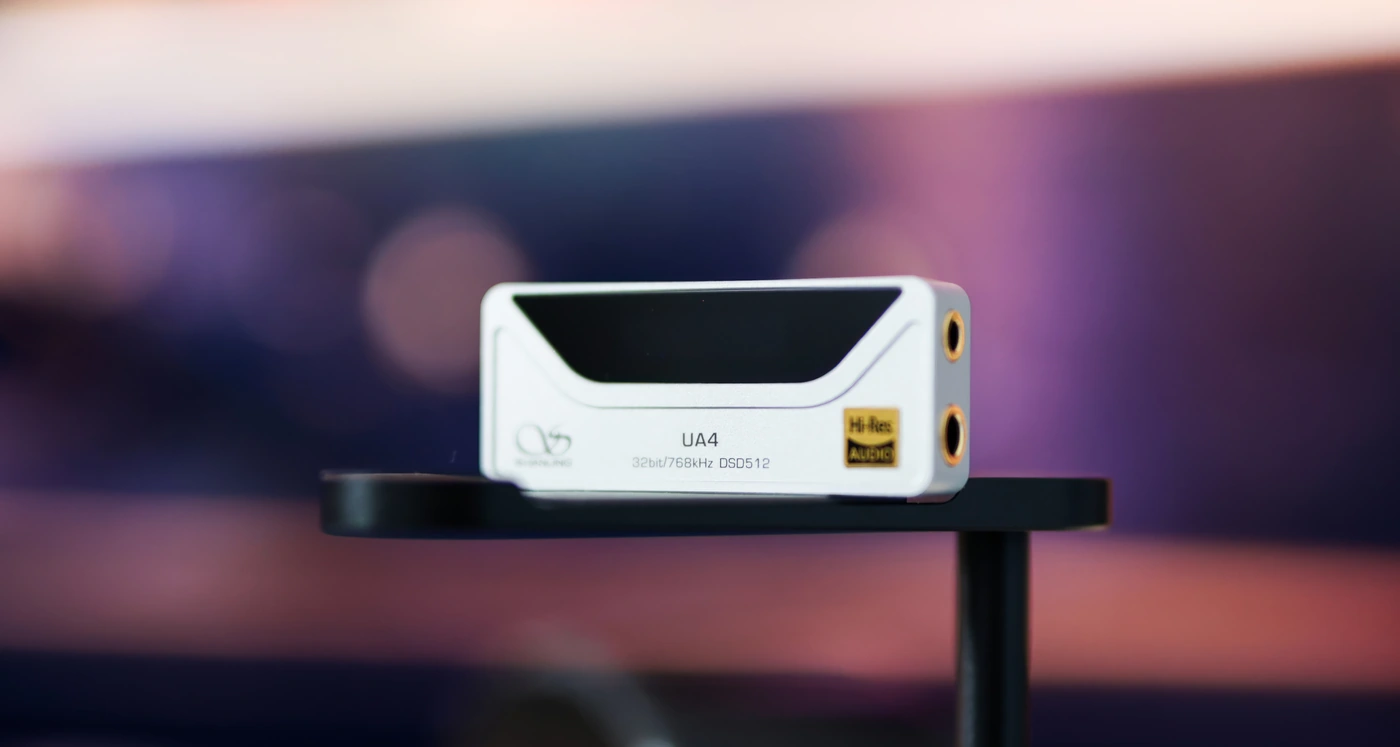
The sound signature is very different between the Balanced and the Single Ended Output, the balanced output is much more neutral, less warm, has a somewhat larger soundstage, better instrument separation, and slightly better resolution. The single Ended headphone output sounds warmer, thicker, smoother, more refined, but more intimate, being quite pleasing too.
Comparisons
Shanling UA4 vs FiiO BTR15 (99 USD vs 119 USD) – It is a good idea to keep in mind that around the same price you can get a Bluetooth receiver with an embedded battery, and with LDAC, aptX HD, and USB DAC function, BTR15 being a worthy competitor in the entry-level range. With BTR15, the device itself is more versatile, and it also has two headphone outputs, strong power output, but the sound of UA4 is different, and UA4 has a wider soundstage, more depth to the sound, better instrument separation, better dynamics, and a better resolution too. BTR15 is still impressive and a great deal, but if you want a slightly better sound, Shanling Ua4 can help, with a thicker midrange, smoother treble, but still improved detail and resolution.
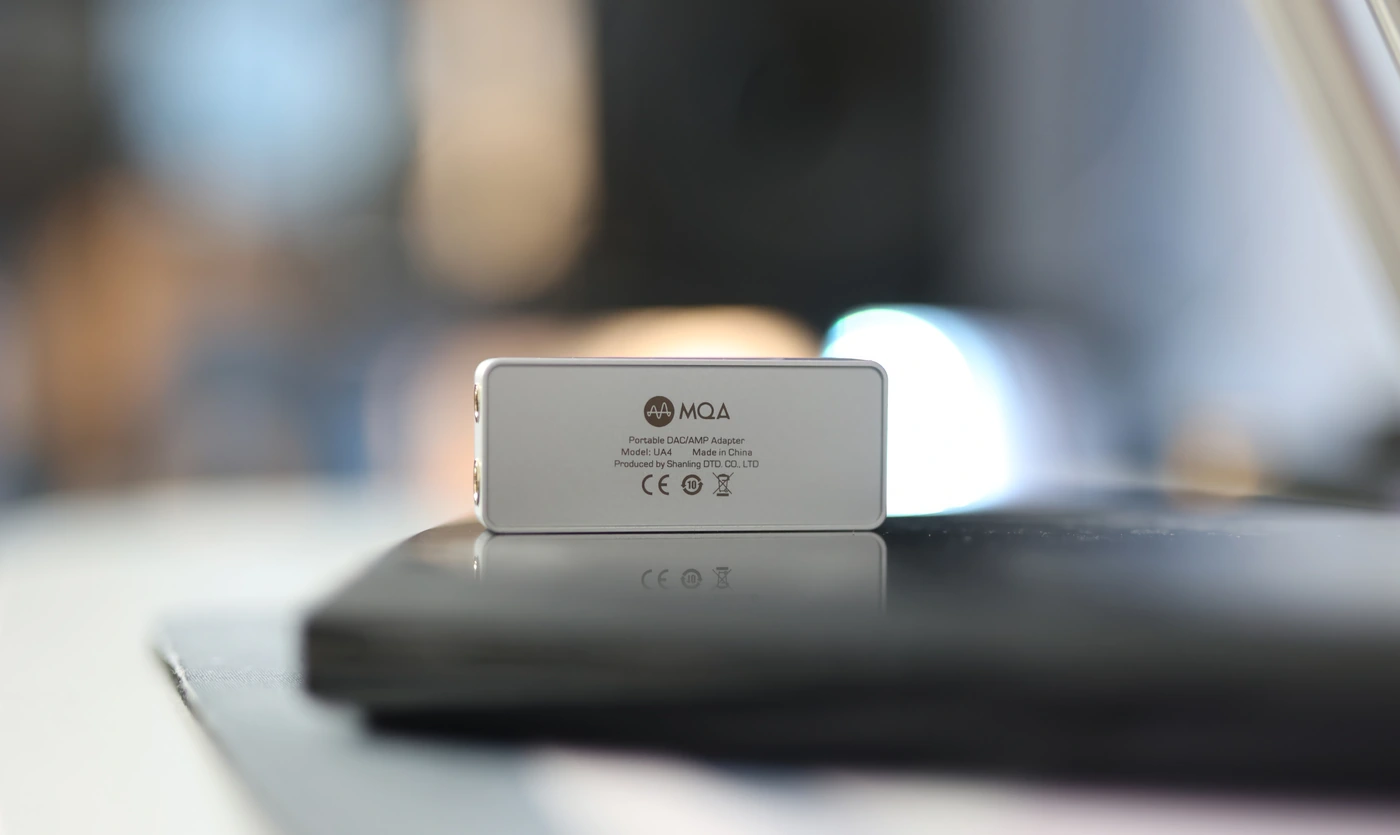
Shanling UA4 vs iBasso DC04PRO (99 USD vs 119 USD) – iBasso DC04PRO has been one of the most popular dongles for a while now, and it is understandable, it has huge driving power, and a pleasing sound, but with UA4 costing less, you gotta wonder what the differences between them are. First off, the driving power of DC04PRO is a bit higher, but sonically, UA4 goes for a more intimate presentation, slightly warmer and thicker midrange, while DC04 PRO goes for a wider, more airy presentation. Shanling UA4 has a smoother, more relaxed treble, while DC 04 PRO goes for a higher energy in the treble, so it can reveal certain details better, having a more contrasty sound, while Ua4 sounds more blended in. If you already have a bright IEM or headphone, Ua4 will tame it, while DC04PRO will bring more life, treble, sparkle, air and dynamics into a setup.
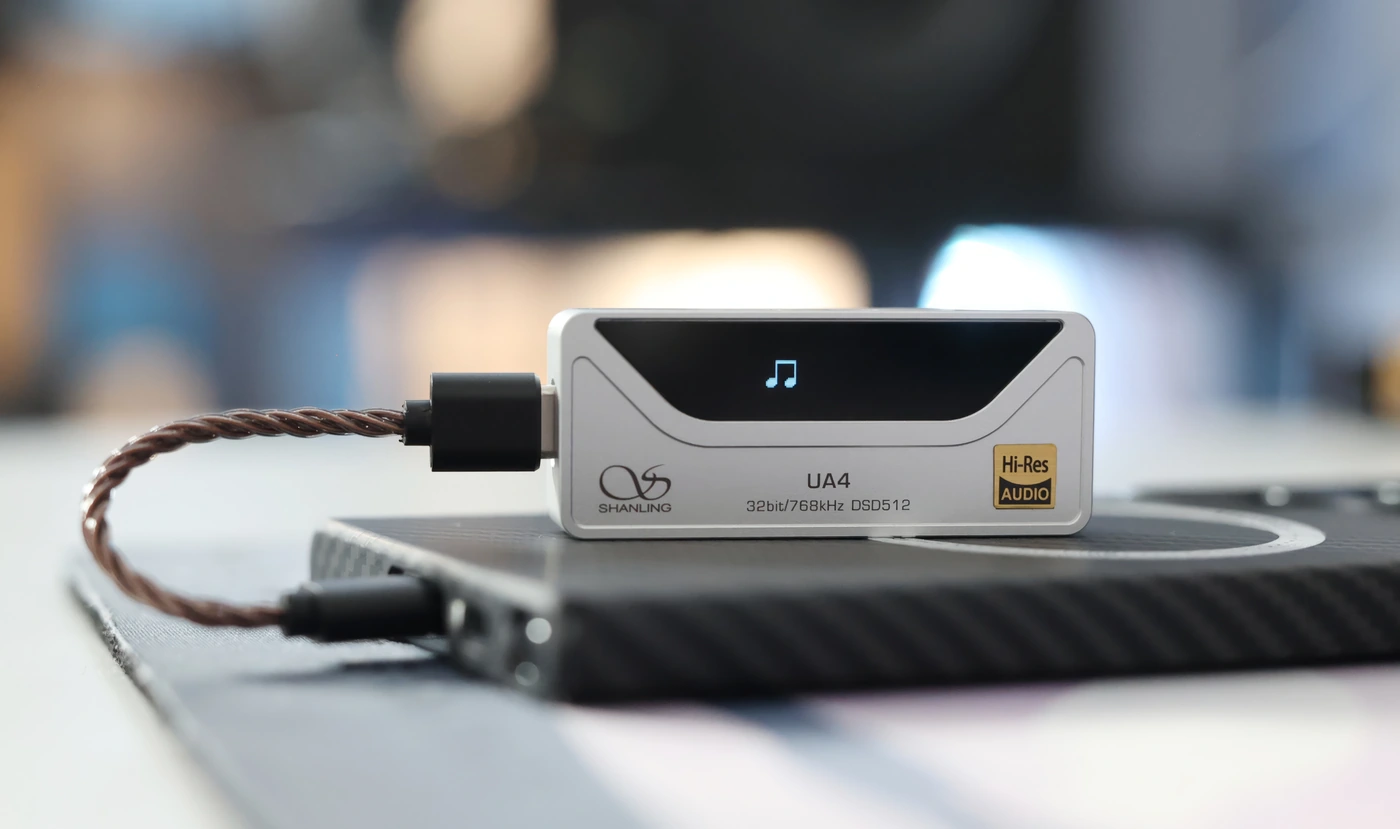
Shanling UA4 vs HIDIZS XO (99 USD vs 99 USD) – HIDIZS has a really cool idea and concept in their XO Dongle DAC, but the execution made it a bit hard to approach, the sound is good, but the EQ modes are a bit aggressive. The design is good on both, both have two headphone outputs, but UA4 has a higher driving power, while XO is a bit less controlled at maximum volume. UA4 has a slightly higher hissing with sensitive IEMs, but it tends to mute the sound entirely while no music is playing, so you rarely hear it, even if listening at super quiet volumes. Sonically, UA4 sounds more natural, cleaner, more detailed, wider, with better instrument separation. HIDIZS XO sounds slightly more dynamically compressed, more processed, with a wider but shallower soundstage, and with good detail but higher distortion too.
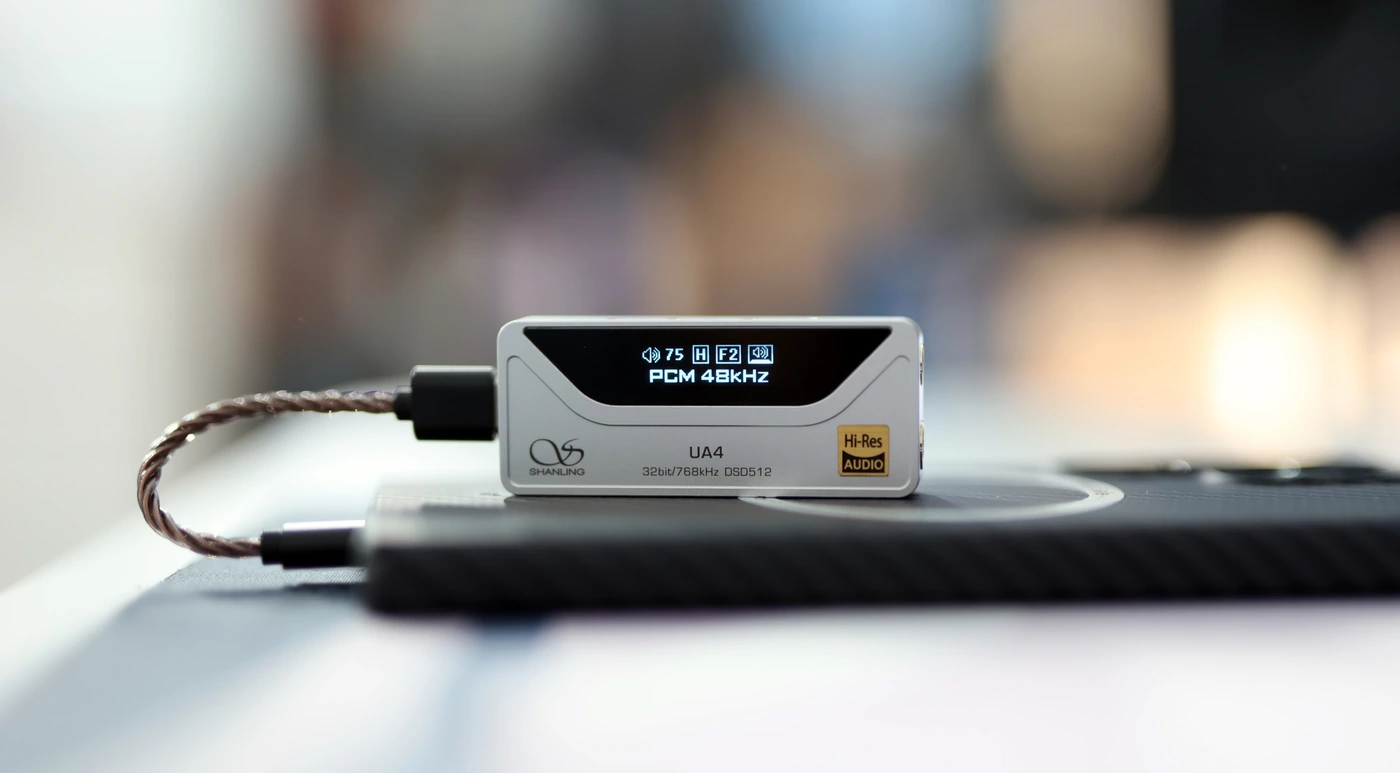
Shanling UA4 vs ddHIFI TC44C (99 USD vs 119 USD) – ddHIFI has a pricier device, but with a bit more style, it also has two headphone outputs, and a good driving power. The main differences would be in the device, as TC44C doesn’t have its own internal volume, it has no USB DAC delay either, but it does have a warmer, smoother sound, with a thicker sound for both headphone outputs, it sounds quite bassier. UA4 sounds more neutral, more natural, and the soundstage is a bit wider, with both having equal instrument separation. Both TC44C and UA4 have about the same resolution and clarity.
Value and Conclusion
With a meager price point of 99 USD, Shanling UA4 seems to be priced slightly better than the current 119 USD standard of the market, and for this money it offers a pretty natural experience, works as intended, and despite being slow to wake when you’re changing the volume, it has no USB DAC delay, and has a low noise floor, high dynamic range, plus a very pleasing sound.
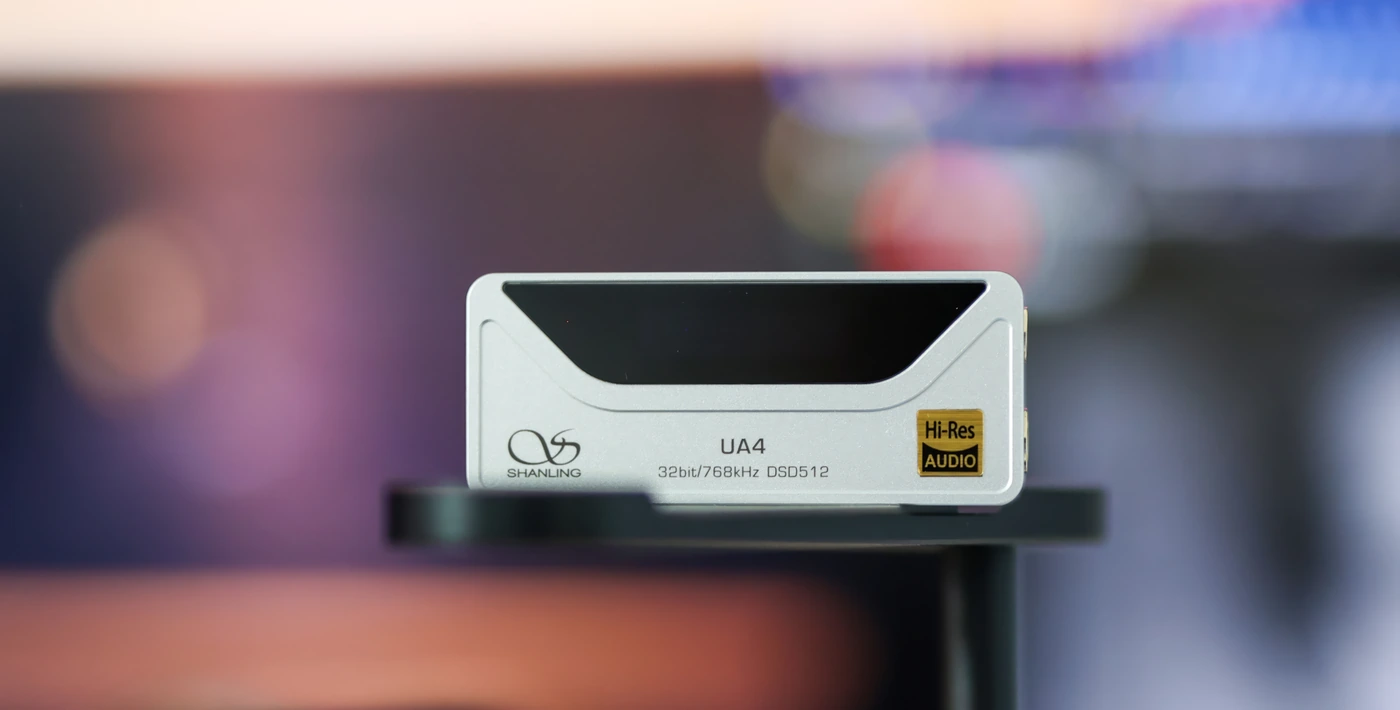
At the end of the day, if you tend to prefer a natural sound, and want a natural soundstage, a warmer bass, smoother treble, a thicker timbre and with a powerful 4.4mm Balanced headphone output, warmer, but smoother sounding 3.5mm Single Ended headphone output, and all in an attractive package with a little display, Shanling UA4 is your answer.
Product Link
You can grab one from www.amazon.com here – https://amzn.to/3OCvTOu
If you’re in the UK, you can grab one from www.amazon.co.uk here – https://amzn.to/4btmMt9
And if you’re from Europe, you can grab one from www.amazon.de here – https://amzn.to/3OxMbI3
--- Please remember to stay safe, and always have fun while listening to music!---
- If you have a dime to spare, please donate, and help us! It would make the day brighter for me and my wife-
Full Playlist used for this review
We listened to more songs than those named in this playlist, but those are excellent for identifying a sonic signature. I recommend trying most of the songs from this playlist, especially if you’re searching for new music! The playlists are different for Spotify, Tidal and Youtube, and based on the songs I enjoy and are available on each!
https://www.youtube.com/playlist?list=PL_cjBXGmwSHSdGcwuc_bKbBDGHL4QvYBu
https://open.spotify.com/playlist/5J3oloz8Riy9LxEGenOjQ0?si=979ba4f082414be7
https://tidal.com/browse/playlist/330fd544-8e5b-4839-bd35-676b2edbb3d5
--- Contact Us ---





